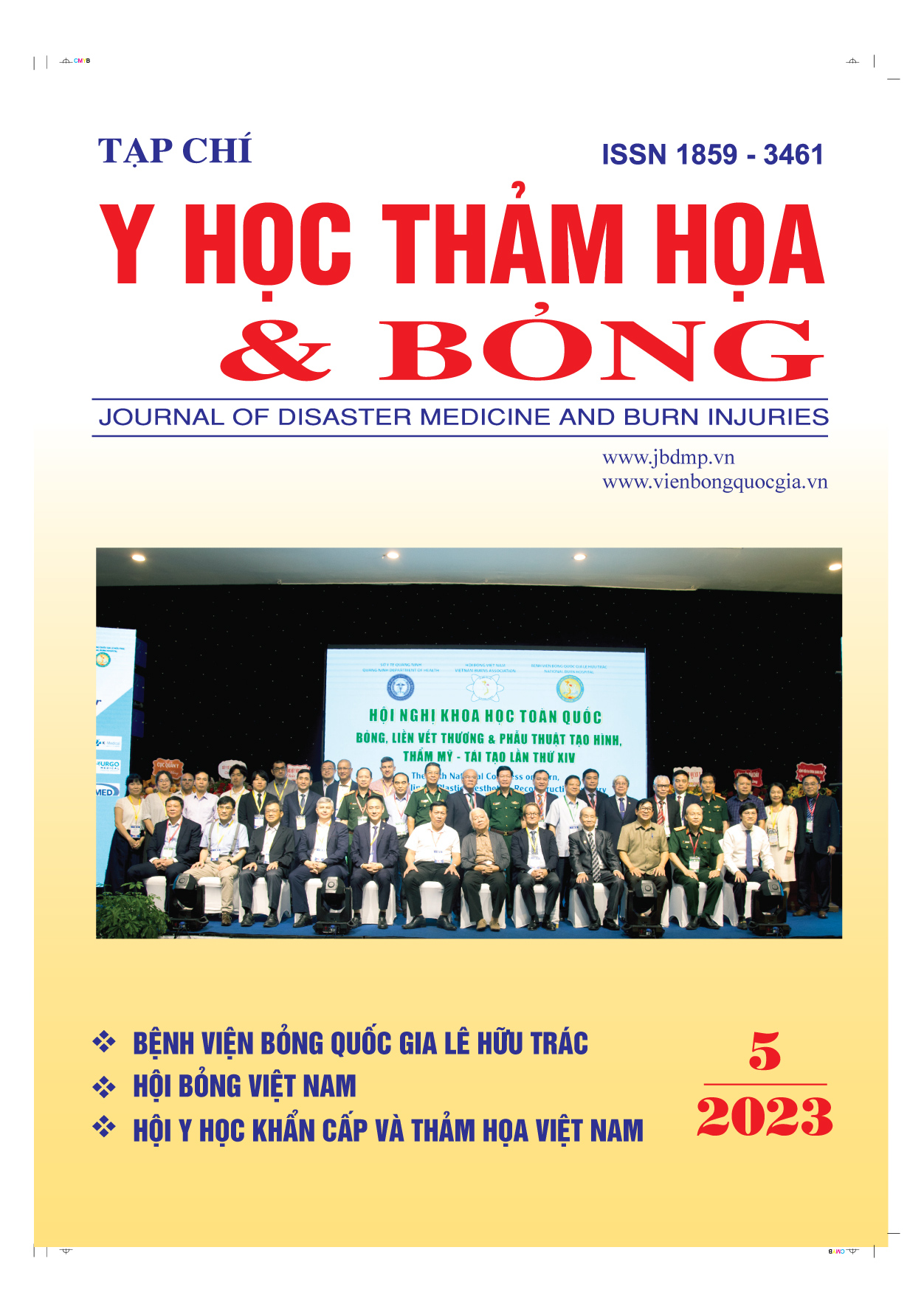Assessment of respiratory improvement status after technical intervention of respiratory support on patients with long-term limitation of movement at the Wound Healing Center, Le Huu Trac National Burn Hospital
Main Article Content
Abstract
Patients with long-term limitation of movement due to brain injury, spinal cord injury, or cerebrovascular accident often have impaired respiratory function. This condition easily leads to pneumonia complications due to respiratory muscle weakness, and sputum stagnation. Many studies are showing the effectiveness of respiratory rehabilitation in improving respiratory function for patients with respiratory impairment.
Objective: Evaluate the level of improvement in respiratory condition after respiratory support intervention for 30 patients with long-term limitation of movement at the Wound Healing Center - Le Huu Trac National Burn Hospital.
Subjects and method: 30 patients with long-term limitation of movement at the Wound Healing Center. Prospective, observation, and comparison before and after respiratory support intervention
Results: The respiratory index improved before and after respiratory support intervention (p < 0.05): Breathing disturbance conditioning decreased by 40%, sputum stagnation decreased by 51.67%, Wheezing condition decreased by 46.67%, Respiratory muscle retraction decreased by 33.33%, SpO2 index increased from 95.8 ± 1.24% to 98.53 ± 0.62% (p > 0.05)
Conclusion: Respiratory support interventions are effective in improving respiratory function in patients with long-term limitation of movement.
Article Details
Keywords
Respiratory rehabilitation, long-term limitation of movement
References
2. Đại học Y Hà Nội (2011). Sinh lý học, "Bài giảng Sinh lý Hô hấp", Nhà xuất bản Y học Hà Nội.
3. Bệnh viện Phổi Trung ương (2020). Chuyên đề đào tạo phục hồi chức năng hô hấp, "Chương trình phục hồi chức năng hô hấp tại các khoa điều trị lâm sàng". tr 42-48.
4. Hoàng Thị Nguyệt, Hoàng Thúy Hằng (1018). "Đánh giá tình trạng hô hấp trước và sau vỗ rung của trẻ mắc bệnh viêm phế quản tại Bệnh viện đa khoa Nông nghiệp". Tạp chí Điều dưỡng Việt Nam, số 26, (2019).
5. Đỗ Thị Bích Vân, Đỗ Mạnh Hùng (2012). "Nhận xét cải thiện tình trạng hô hấp trước và sau vỗ rung liệu pháp ở bệnh nhân viêm phổi tại Bệnh viện Nhi Trung ương", Tạp chí Y học thành phố Hồ Chí Minh, số 4, (2012).
6. Bạch Thị Hoa (2011). “ Đánh giá hiệu quả lý liệu pháp hô hấp trên bệnh nhân trẻ em xẹp phổi sau rút nội khí quản ở Viện tim Hà Nội”. Đề tài cấp cơ sở, Viện tim Hà Nội.
7. David J. Berlowitz, Brooke Wadsworth Jack Ross (2016). Respiratory problems and management in people with spinal cord injury, Breathe, 2016 Dec; 12(4): 328-340
8. David J Berlowitz 1, Jeanette Tamplin (2013). Respiratory muscle training for cervical spinal cord injury, Cochrane Database Syst Rev. 2013 Jul 23;(7): CD008507.
9. J Tamplin, D J Berlowitz (2014). A systematic review and meta-analysis of the effects of respiratory muscle training on pulmonary function in tetraplegia, Spinal Cord, 2014 Mar;52(3):175-80.
10. Cameron M Gee , et al (2019). Respiratory muscle training in athletes with cervical spinal cord injury: effects on cardiopulmonary function and exercise capacity, J Physiol. 2019 Jul;597(14):3673-3685.


